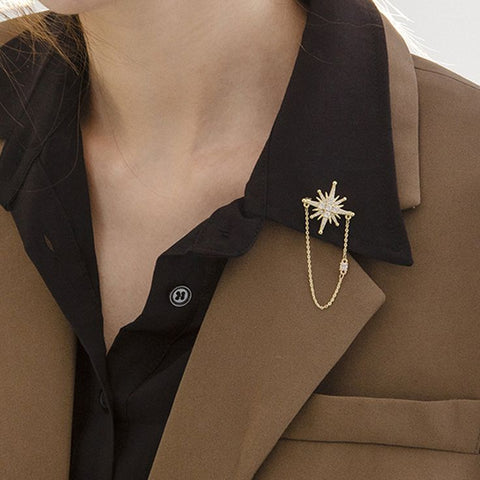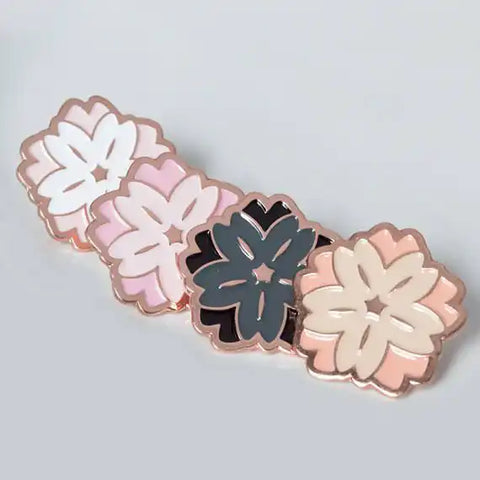What Are Most Enamel Pins Made Of
Enamel pins have become a popular means of self-expression, branding, and even art. These small, vibrant accessories can be found on backpacks, lapels, and bulletin boards, showcasing unique designs and messages. But have you ever wondered what materials are used to create these charming little pins?
Enamel Pin Basics
Before we dive into the materials used to craft enamel pins, let's begin with a brief overview of what enamel pins are and why they're so intriguing. Enamel pins are small, decorative pieces of jewelry or artwork that can be attached to clothing, bags, or accessories. They come in various shapes, sizes, and designs, making them a versatile medium for personal expression and branding.
The base material of an enamel pin plays a pivotal role in its overall quality, durability, and aesthetics. Common base materials for enamel pins include metal, plastic, and wood, each with its own unique properties and applications.
Materials Used in Enamel Pins
- Metal: Metal is the most popular choice for creating enamel pins due to its durability and ability to hold intricate designs. Generally, Zinc alloys and Iron are the most used metals in enamel pin-making. These metals are cost-effective and provide a solid foundation for the enamel coating. Aluminum and Stainless steel, on the other hand, are commonly used in making offset print pins, which are a different category of pins.
- Plastic: Plastic is another option for base materials, especially when cost-effectiveness and lightweight properties are desired. However, plastic pins may not be as durable as metal pins and may not be suitable for all design styles.
- Wood: Wooden pins are a unique and eco-friendly option. They provide a warm, natural aesthetic and can be a great choice for certain artistic designs. However, wood lacks the durability of metal and may require more care to maintain.

Enamel Coating
The enamel coating on a pin is what gives it that smooth, colorful surface. Enamel is essentially powdered glass that is fused to the metal base through a high-temperature firing process. There are two primary types of enamel coating:
Hard Enamel: Hard enamel pins have a glass-like, polished finish. They are created by adding multiple layers of enamel, with each layer being fired at high temperatures. The result is a durable, high-quality pin with a lustrous appearance.
Soft Enamel: Soft enamel pins have raised metal edges and recessed enamel areas, creating a textured look. They are less expensive to produce than hard enamel pins and are known for their versatility and affordability.
In addition to these two primary types, there are various special effects that can be applied to enamel pins. These include glitter, glow-in-the-dark, and translucent enamel, which can add unique and eye-catching elements to pin designs.
Customization and Design
The base material of an enamel pin has a significant impact on the design possibilities. Metal pins, especially those made of Zinc alloys and Iron, are known for their ability to hold intricate and detailed designs. Brass and Copper are also used in manufacturing enamel pins, offering different aesthetic qualities. Designers have a range of choices when it comes to color options and finishes, allowing for creativity and customization.
The process of designing enamel pins involves the careful consideration of the chosen base material, as this influences how the colors and details will appear on the finished product. The choice of metal also affects the pin's weight and overall feel. For example, Copper and Brass pins have a more substantial weight compared to Iron or Zinc alloy pins.
Durability and Maintenance
The choice of base material and enamel type significantly impacts the durability of an enamel pin. Metal pins, particularly those made from Zinc alloys, are known for their sturdiness and resilience. They can withstand everyday wear and tear, making them a long-lasting accessory.
Wooden pins, on the other hand, are more delicate and require careful handling to prevent damage. Plastic pins may not be as resilient as metal but are suitable for various purposes.
To extend the lifespan of your enamel pins, regardless of the base material, it's essential to store them properly and avoid subjecting them to harsh conditions. To clean them, a soft cloth and mild soap can be used, but avoid abrasive materials that could scratch the enamel.

Enamel pins are small treasures that pack a punch when it comes to personal expression, branding, and art. They are created using a variety of base materials, with metal being the most popular choice for its durability and design capabilities. Generally, Zinc alloys and Iron are the most used metals in enamel pin-making, while Aluminum and Stainless steel are more common in offset print pins. Brass and Copper also make appearances, each offering distinct visual and tactile qualities.
The art of enamel coating, whether through hard or soft enamel, adds the finishing touch that makes these pins truly remarkable. Special effects can elevate their charm and uniqueness. Designers choose materials based on their creative vision, considering how the base material will influence the final design and overall feel of the pin.
In the end, regardless of the material, proper care and maintenance can ensure that your enamel pins remain in excellent condition, ready to brighten your attire or share your message for years to come. The world of enamel pins is a vibrant one, and the materials used in their creation are at the core of what makes them so special.

